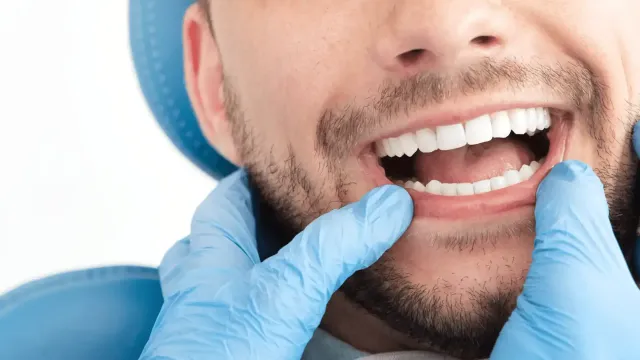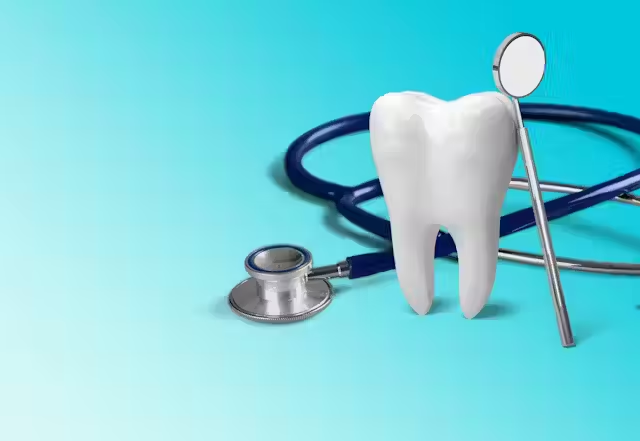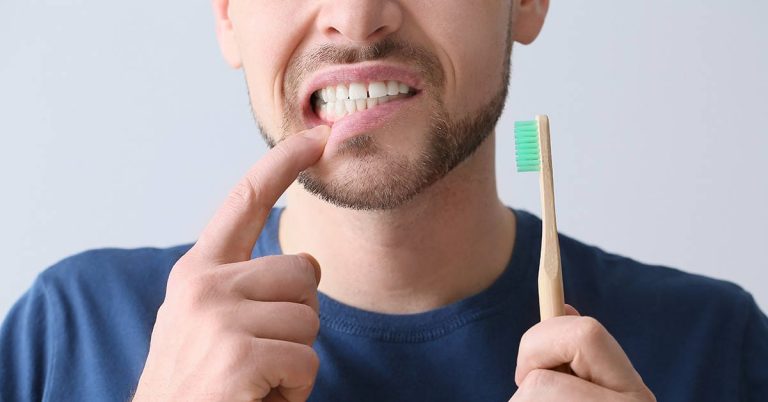Water Flossing vs. Traditional Flossing: Which is More Effective?
Let’s face it—flossing is one of those things we all know we should do, but it’s easy to let it slide. Maybe you’re in a rush, or maybe you just don’t love the feeling of string floss tugging between your teeth. But here’s the deal: flossing is a non-negotiable part of keeping your smile healthy. It’s the secret weapon that removes plaque and food particles your toothbrush can’t reach, helping you avoid cavities, gum disease, and those not-so-fun dental bills.
Now, here’s where it gets interesting. Traditional flossing isn’t your only option anymore. Water flossers have entered the chat, and they’re making waves (pun intended). These handy devices use a stream of water to clean between your teeth and along your gumline, offering a gentler, tech-savvy alternative to string floss. But does that mean they’re better? Or is traditional floss still the gold standard?
In this article, we’re breaking down the pros and cons of water flossing vs. traditional flossing. We’ll explore how each method works, compare their effectiveness, and help you decide which one might be the best fit for your oral care routine. Whether you’re curious about water flossers or just looking to up your flossing game, we’ve got you covered. Let’s dive in!
How Water Flossers Work
Alright, let’s get into the nitty-gritty of water flossers. If you’ve ever seen one of these gadgets, you might’ve thought, “Is that a tiny power washer for my teeth?” And honestly, you’re not far off. Water flossers, also known as oral irrigators, use a targeted stream of water to clean between your teeth and along your gumline. But how exactly do they work, and why are they becoming so popular? Let’s break it down.
Here’s the basic idea: you fill the water flosser’s reservoir with warm water (or an antimicrobial mouthwash, if you’re feeling fancy), then point the handheld tip at your teeth. When you turn it on, a steady stream of water shoots out, dislodging food particles, plaque, and bacteria from those hard-to-reach spots. Most models come with adjustable pressure settings, so you can customize the intensity to match your comfort level—whether you’ve got sensitive gums or just want a deeper clean.
One of the biggest selling points of water flossers is how easy they are to use, especially for people with braces, implants, or other dental work. Traditional floss can be a hassle to thread around wires or under bridges, but a water flosser glides right through, making it a lifesaver for anyone with a more complicated dental setup. Plus, they’re gentle on your gums, which is a huge bonus if you’ve ever winced at the thought of snapping string floss against sensitive tissue.
But here’s the thing: while water flossers are great at flushing out debris, they don’t physically scrape away plaque like traditional floss does. That’s why some dentists recommend using both methods for a truly thorough clean. Think of it as a dynamic duo—water flossing to rinse and traditional flossing to scrape.
So, now that you know how water flossers work, let’s move on to the big question: how do they stack up against traditional flossing when it comes to keeping your teeth plaque-free? We’ll tackle that next!
Plaque Removal: Water Flossing vs. Traditional Flossing
Alright, let’s get to the heart of the matter: which method does a better job at removing plaque—water flossing or traditional flossing? This is where things get interesting, because both have their strengths, but they work in slightly different ways.
First, let’s talk about traditional floss. When you slide that string between your teeth, it physically scrapes away plaque and food particles. It’s like using a tiny squeegee to clean out the gunk. Studies have shown that traditional flossing is highly effective at reducing plaque buildup and preventing gum disease when done correctly. The key phrase here, though, is when done correctly. If you’re rushing through it or not using the right technique, you might not be getting the full benefits.
Now, let’s look at water flossers. These devices use a stream of water to flush out debris and bacteria from between your teeth and below the gumline. While they don’t scrape plaque away like traditional floss, they’re excellent at dislodging particles and reducing bacteria in those hard-to-reach areas. Research has shown that water flossers can be just as effective as traditional floss at improving gum health and reducing bleeding, especially for people with braces or dental work.
But here’s the kicker: water flossers might have an edge when it comes to convenience and accessibility. For example, if you’ve got arthritis or dexterity issues, maneuvering traditional floss can be a challenge. A water flosser, on the other hand, is easier to handle and can still give you a thorough clean.
So, which one is better for plaque removal? The truth is, it depends on your needs and preferences. If you’re diligent about technique and don’t mind the hands-on approach, traditional floss might be your go-to. But if you’re looking for something gentler, more convenient, or better suited to your dental setup, a water flosser could be the way to go.
Up next, we’ll dive into the pros and cons of each method to help you weigh your options. Trust me, by the end of this, you’ll have a clear picture of which flossing style fits your lifestyle. Let’s keep going!
Benefits and Drawbacks of Each Method
Now that we’ve covered how water flossing and traditional flossing stack up in terms of plaque removal, let’s dive into the pros and cons of each method. After all, no tool is perfect, and understanding the strengths and weaknesses of both can help you make the best choice for your smile.
Water Flossing: The Pros and Cons
Pros:
- Gentle on Gums: If you’ve got sensitive gums or a history of bleeding, water flossers are a game-changer. The adjustable water pressure lets you customize the intensity, making it a comfortable option for even the most tender mouths.
- Great for Braces and Dental Work: Got braces, bridges, or implants? Water flossers are your new best friend. They easily clean around wires and hardware, saving you the hassle of threading traditional floss.
- Easy to Use: Let’s be real—flossing can feel like a chore. Water flossers are quick, straightforward, and less fiddly than traditional floss, making it easier to stick to your routine.
- Deep Cleaning: The pulsating water stream can reach below the gumline, flushing out bacteria and debris that traditional floss might miss.
Cons:
- Cost: Water flossers are more expensive upfront than a pack of string floss. While they’re an investment in your oral health, the price tag might be a barrier for some.
- Requires Space and Power: Unlike traditional floss, water flossers need counter space, water, and electricity (or batteries) to work. They’re not exactly travel-friendly.
- Doesn’t Scrape Plaque: While water flossers are great at rinsing, they don’t physically scrape away plaque like traditional floss does.
Traditional Flossing: The Pros and Cons
Pros:
- Effective Plaque Removal: Traditional floss physically scrapes away plaque and food particles, making it a reliable choice for keeping your teeth clean.
- Inexpensive: A pack of floss is cheap and widely available. You can toss it in your bag or pocket, so it’s always on hand.
- Portable: No water, no electricity, no problem. Traditional floss is perfect for on-the-go cleaning, whether you’re at work, traveling, or just too lazy to get out of bed.
- Proven Track Record: Dentists have been recommending traditional floss for decades, and for good reason—it works.
Cons:
- Tricky Technique: Let’s face it—flossing can be awkward. If you’re not using the right technique, you might not be cleaning effectively (or worse, you could irritate your gums).
- Hard on Sensitive Gums: If your gums are prone to bleeding or sensitivity, traditional floss can feel harsh, especially if you’re not gentle.
- Challenging for Braces and Dental Work: Threading floss around braces, bridges, or implants can be time-consuming and frustrating.
So, Which One Should You Choose?
The answer depends on your unique needs. If you’ve got braces, sensitive gums, or just want a gentler, more convenient option, a water flosser might be your best bet. But if you’re looking for a cost-effective, portable solution that’s proven to scrape away plaque, traditional floss could be the way to go.
Up next, we’ll explore specific situations where one method might be better than the other. Spoiler alert: sometimes, the best choice is a combination of both! Let’s keep going.
Situations Where One Method Might Be Preferable Over the Other
Let’s get real—life isn’t one-size-fits-all, and neither is flossing. Depending on your lifestyle, dental needs, and even your mood on any given day, one method might work better for you than the other. Here’s a breakdown of when to reach for a water flosser, when to stick with traditional floss, and when you might want to use both.
When to Choose Water Flossing
- You Have Braces or Dental Work: If you’re rocking braces, bridges, or implants, water flossing is a no-brainer. It’s way easier to clean around wires and hardware with a stream of water than trying to thread floss through tight spaces.
- Your Gums Are Sensitive: If traditional floss leaves your gums feeling raw or bleeding, a water flosser can be a gentler alternative. The adjustable pressure settings let you customize the intensity to suit your comfort level.
- You Struggle with Dexterity: Arthritis, limited hand mobility, or just plain clumsiness? Water flossers are easier to handle than fiddly string floss, making them a great option for anyone who finds traditional flossing tricky.
- You Want a Deeper Clean: Water flossers can reach below the gumline and flush out bacteria and debris that traditional floss might miss. If you’re looking for a more thorough clean, this might be the way to go.
When to Stick with Traditional Flossing
- You’re on a Budget: Let’s be honest—water flossers aren’t cheap. If you’re looking for an affordable, effective option, traditional floss is hard to beat.
- You’re Always on the Go: Traditional floss is lightweight, portable, and doesn’t require water or electricity. Toss it in your bag, and you’re ready to floss anywhere, anytime.
- You Prefer a Hands-On Approach: Some people just like the feeling of physically scraping away plaque. If you’re one of them, traditional floss might feel more satisfying.
- You’re a Minimalist: If you’re short on bathroom space or don’t want another gadget cluttering your counter, traditional floss is the simpler choice.
When to Use Both
Why choose when you can have the best of both worlds? Many dentists recommend combining water flossing and traditional flossing for a truly comprehensive clean. Use a water flosser to rinse away debris and bacteria, then follow up with traditional floss to scrape away any remaining plaque. It’s like a double cleanse for your teeth—and your gums will thank you.
So, which method is right for you? It all comes down to your unique needs and preferences. Whether you’re Team Water Flosser, Team Traditional Floss, or somewhere in between, the most important thing is that you’re flossing regularly.
Up next, we’ll wrap things up with some tips for making flossing a consistent part of your routine—no matter which method you choose. Let’s finish strong!
Tips for Incorporating Flossing into Your Routine
Let’s be honest—flossing is one of those habits that’s easy to skip when life gets busy. But here’s the thing: consistency is key when it comes to keeping your teeth and gums healthy. Whether you’re team water flosser, team traditional floss, or a little bit of both, these tips will help you make flossing a regular part of your routine.
1. Make It Convenient
- Water Flossers: Keep your water flosser somewhere visible, like next to your toothbrush. Out of sight, out of mind, right? If it’s staring you in the face, you’re more likely to use it.
- Traditional Floss: Stash floss everywhere—your bathroom, your car, your desk drawer, your gym bag. That way, you’ve got no excuse to skip it, no matter where you are.
2. Pair It with Another Habit
Tie flossing to something you already do every day, like brushing your teeth. Think of it as a two-for-one deal: brush, then floss. Over time, it’ll become second nature.
3. Set a Reminder
If you’re the forgetful type, set a daily reminder on your phone. A little ping can go a long way in keeping you on track.
4. Make It Enjoyable
- Water Flossers: Experiment with different pressure settings or add a splash of mouthwash to the water reservoir for a refreshing twist.
- Traditional Floss: Treat yourself to flavored floss—mint, cinnamon, or even bubblegum. It’s a small thing, but it can make flossing feel less like a chore.
5. Track Your Progress
Use a habit tracker or mark your calendar every time you floss. Seeing those streaks build up can be super motivating.
6. Start Small
If flossing feels overwhelming, start with just one tooth. Seriously. Once you get going, you’ll probably end up flossing the rest. It’s all about building momentum.
7. Reward Yourself
Celebrate your flossing wins! Whether it’s a week of consistent flossing or finally mastering the technique, give yourself a little pat on the back (or maybe a treat—you deserve it).
8. Don’t Stress About Perfection
Missed a day? No big deal. Just pick up where you left off. Flossing is about progress, not perfection.
Conclusion
So, there you have it—the great flossing debate, broken down. Whether you choose water flossing, traditional flossing, or a combination of both, the most important thing is that you’re taking steps to care for your teeth and gums. Both methods have their pros and cons, and the best choice depends on your unique needs, preferences, and lifestyle.
At the end of the day, flossing isn’t just about avoiding cavities or keeping your dentist happy (though those are great perks). It’s about investing in your overall health and keeping your smile bright for years to come.
So, what’s your flossing style? Are you team water flosser, team traditional floss, or a little bit of both? Let us know in the comments—we’d love to hear your thoughts! And if you’re still unsure which method is right for you, don’t hesitate to ask your dentist for personalized advice.
Now, go grab that floss (or water flosser) and show your teeth some love. Your future self will thank you!
FAQs
1. What’s the main difference between water flossing and traditional flossing?
Answer: Traditional flossing uses string to physically scrape away plaque, while water flossing uses a stream of water to flush out debris and bacteria.
2. Is a water flosser as effective as traditional floss for removing plaque?
Answer: Studies show water flossers can be just as effective at improving gum health and reducing bleeding, especially for those with braces or dental work, but they don’t physically scrape away plaque like traditional floss.
3. Who would benefit most from using a water flosser?
Answer: People with braces, implants, sensitive gums, or those who struggle with the dexterity required for traditional flossing.
4. Is traditional floss better at removing plaque in certain situations?
Answer: Yes, if you are diligent with the correct technique, traditional floss is very effective at physically removing plaque.
5. What are the advantages of using a water flosser?
Answer: Water flossers are gentle on gums, easy to use (especially with dental work), and can provide a deeper clean by reaching below the gumline.
6. What are the drawbacks of using a water flosser?
Answer: Water flossers are more expensive, require counter space and a power source, and don’t physically scrape away plaque.
7. What are the advantages of using traditional floss?
Answer: Traditional floss is inexpensive, portable, readily available, and effectively removes plaque when used correctly.
8. What are the disadvantages of using traditional floss?
Answer: Traditional flossing can be tricky to master, hard on sensitive gums, and challenging to use with braces or dental work.
9. Can I use both a water flosser and traditional floss?
Answer: Yes, many dentists recommend using both methods for a comprehensive clean: water flossing to rinse and traditional flossing to scrape.
10. How can I make flossing a regular part of my routine?
Answer: Make it convenient, pair it with another habit (like brushing), set a reminder, make it enjoyable (flavored floss or mouthwash in the water flosser), and track your progress







